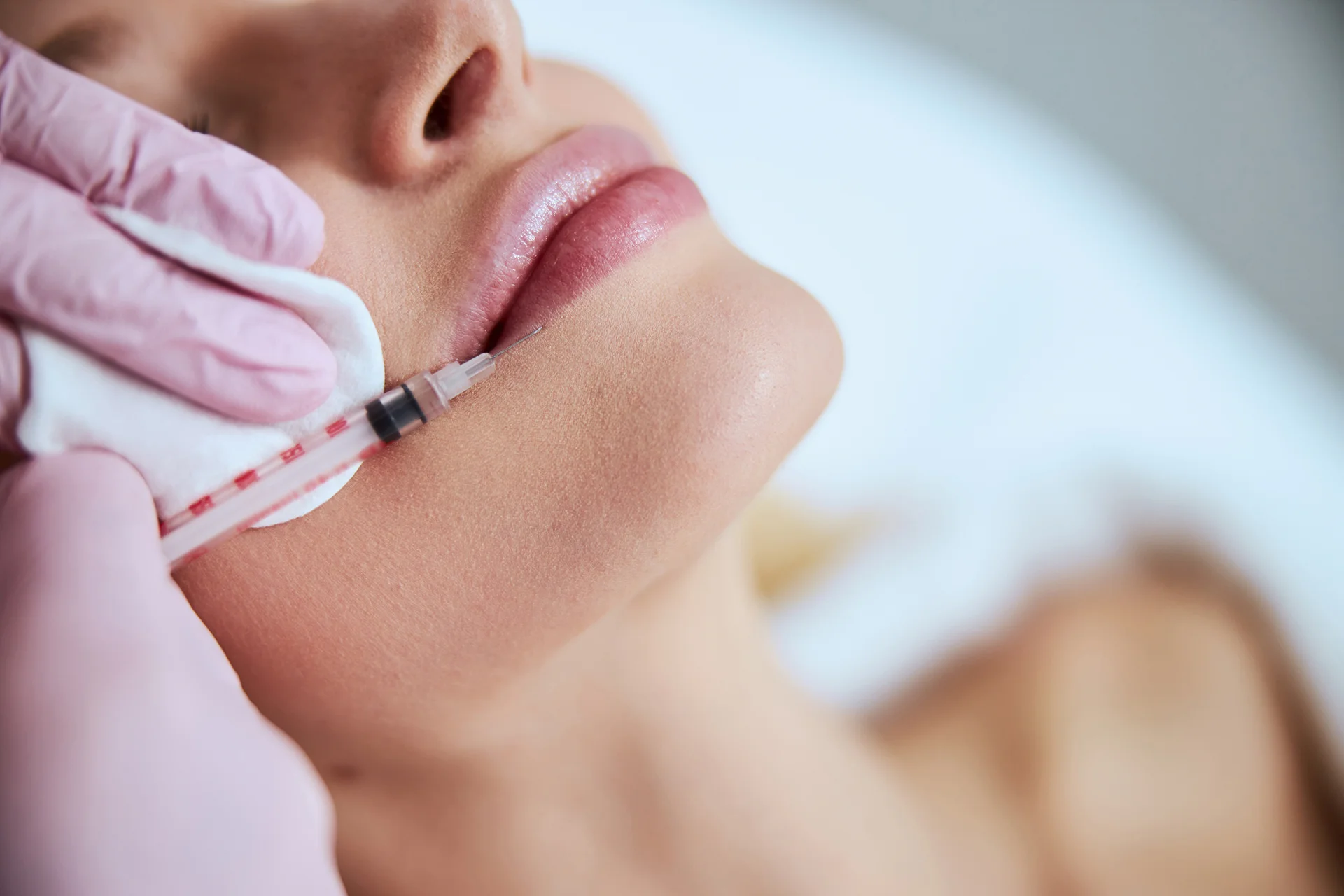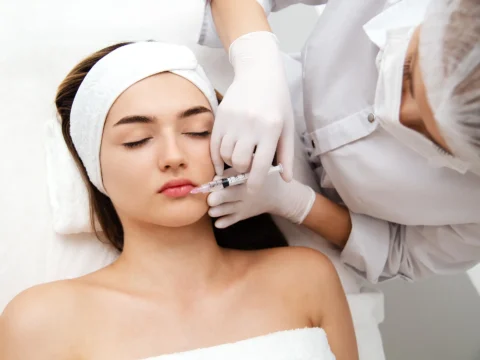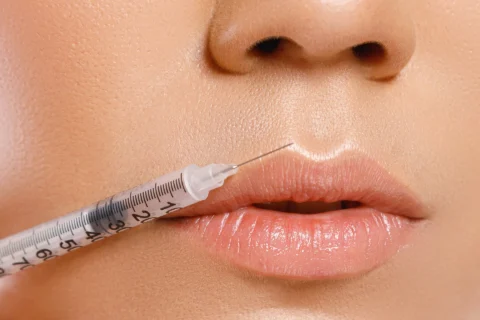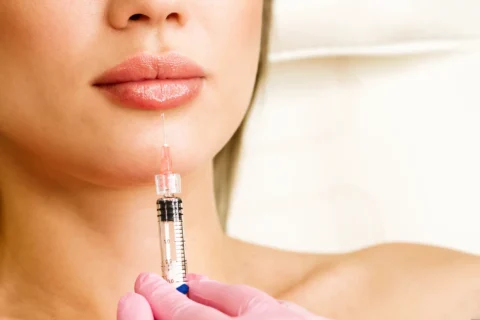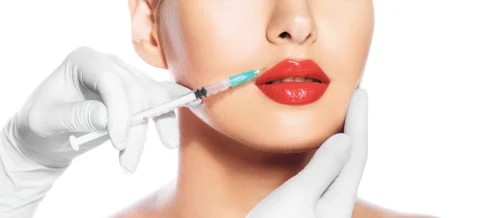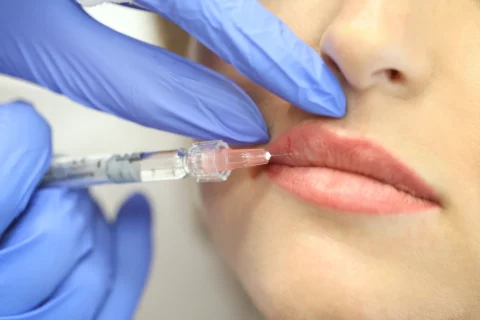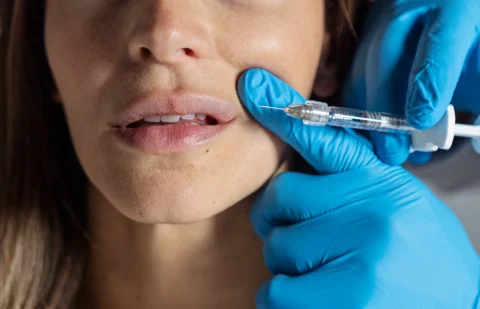Causes, Management, and When to Seek Help
Lip fillers offer a popular way to add volume, definition, and youthful plumpness to the lips. However, it’s common to experience some pain or discomfort during and after the procedure.
This article will explore the causes of pain after lip filler injections, tips for effective pain management, and guidance on when post-procedure pain warrants a return visit to your provider.
Why Pain Occurs After Lip Filler Injections
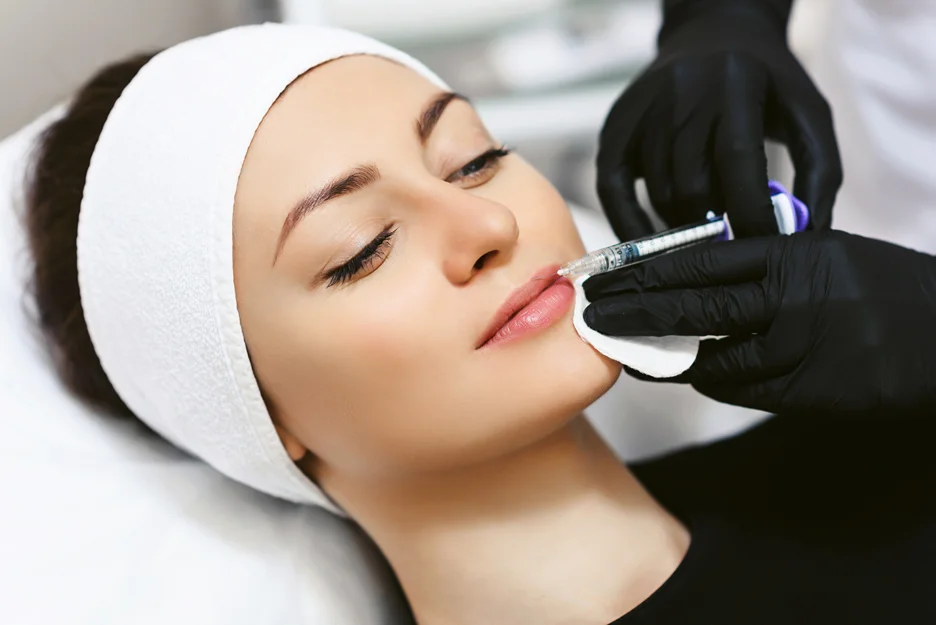
Pain is to be expected to some degree after a lip filler treatment. Here are some of the most common reasons you may encounter discomfort:
Normal Short-Term Sensitivity
Mild to moderate pain, swelling, bruising, and tenderness are standard aftereffects of lip filler injections. The procedure involves multiple injections to sensitive areas of the lips and mouth.
This can lead to inflammation and irritation that subsides over the next few days. Staying well hydrated and using cool compresses can provide relief.
Technique and Skill of the Injector
The provider’s injection approach and expertise significantly impact your pain levels. Inexperienced injectors often do not apply anesthesia effectively or use improper techniques that increase discomfort.
This emphasizes the importance of choosing an accomplished provider like Dr. Soni at Ethos Aesthetics + Wellness, known for his artistic skills and gentle approach.
Type of Filler Used
The ingredients in the filler product also determine pain levels. Hyaluronic acid fillers tend to produce less discomfort compared to collagen-based options. The molecule size and concentration of the filler also play a role. Your chosen provider can recommend options suited for pain management.
Individual Differences in Pain Tolerance
Each patient has a unique pain threshold and sensory experience. Your individual nerves, health conditions, medication use, and psychological state all contribute. Discuss your pain tolerance with your provider so they can take appropriate measures to keep you comfortable.
Distinguishing Between Normal Discomfort and Complications
While some pain is expected after lip filler injections, severe or persistent discomfort can signal complications that warrant medical attention. Here are some warning signs:
- Intense throbbing pain that does not respond to medication or home remedies
- Significant swelling, redness, and warmth around the lips and mouth
- Fever, chills, nausea, or vomiting
- Blisters, sores, bruising, and discolored skin around the injection sites
- Tingling, numbness, or loss of sensation in the lips and mouth area
- A visible abnormal reaction, like nodules or hard lumps under the skin
Contact your provider immediately if you experience any post-procedure issues for proper diagnosis and care. Dr. Soni at Ethos Aesthetics + Wellness promptly responds to patients reporting extreme pain or other problems following lip injections.
Effective Pain Management and Aftercare Tips
You can implement several medical and at-home strategies to alleviate normal post-lip filler discomfort:
Oral and Topical Medications
- Over-the-counter nonsteroidal anti-inflammatory drugs (NSAIDs) like ibuprofen help reduce inflammation.
- Acetaminophen/paracetamol alleviates pain symptoms.
- Arnica tablets and gels applied topically decrease bruising and swelling.
- Antivirals like valacyclovir prevent cold sore breakouts triggered by irritation.
Cold Compresses
Applying cold packs or chilled gel packs to the lips provides numbing relief and prevents swelling. Use for 10-15 minutes a few times daily as needed. Do not apply ice directly.
Soft Diet
Stick to a soft food diet for a few days. Avoid hard, crunchy, spicy, salty, and acidic foods that can aggravate pain and swelling. Focus on smoothies, yogurt, soup, applesauce, and other gentle options.
Gentle Lip Care
Use a mild cleanser and fragrance-free moisturizer to clean and hydrate lips. Avoid scrubbing or picking lips while healing. Apply lip balm and SPF 30+ sunscreen before going outside.
Rest and Recovery
Make time to rest and recover after your lip filler appointment. This gives your body time to heal properly. Avoid strenuous activities that can increase blood flow and swelling. Manage pain and discomfort symptoms at home.
Proper Aftercare
Closely follow your provider’s aftercare instructions for cleaning, icing, avoiding irritants, using medications, and more. This optimizes results and healing. Contact your provider with any severe or worsening symptoms.
Long-Term Outlook and Follow-Up Care
For most patients, pain after lip injections diminishes significantly within 3 to 7 days. Any swelling, tenderness, and bruising generally resolve within 14 days. Avoid touching or irritating the area while healing. Most providers recommend avoiding strenuous activity for 24 hours after injections.
Schedule a follow-up appointment around the 2-week mark to assess results and your needs for touch-ups or repeat treatments. It is also wise to follow up if you experience prolonged discomfort or other problems. Depending on the filler used, repeat treatments are needed every 6 to 18 months to maintain results.
See your provider on a routine basis to discuss whether to adjust your filler amounts or types to achieve your desired lip fullness and shape while minimizing discomfort. Be sure to voice any pain concerns at follow-up visits.
Common Myths vs. Facts About Pain After Lip Fillers
There are some misconceptions about pain levels and experiences with lip injections:
Myth: Lip fillers are a very painful procedure.
Fact: Using an anesthetic and an experienced injector makes the procedure generally well-tolerated with only mild discomfort.
Myth: Bruising and swelling after lip fillers always indicate a problem.
Fact: Mild to moderate bruising and swelling are standard and resolve quickly with proper aftercare.
Myth: Over-the-counter pain meds cannot alleviate filler pain.
Fact: OTC anti-inflammatories effectively and safely reduce post-injection discomfort for most patients.
Myth: Ice should be applied directly to reduce swelling.
Fact: Direct ice contact can damage the skin. Use wrapped cold compresses instead.
Myth: All pain after lip fillers requires immediate medical care.
Fact: Mild to moderate pain often resolves on its own. Severe or worsening pain needs evaluation.
Choosing the Right Practitioner for Your Lip Filler Experience
Your chosen provider plays a major role in successful, comfortable lip filler results. Be sure to select an experienced board-certified plastic surgeon or provider like Dr. Soni at Ethos Aesthetics + Wellness. Verify their expertise with the specific fillers and techniques you want.
Look for a provider who:
- Offers Anesthetics and Pain Control Measures: A good practitioner will have options for minimizing discomfort during the procedure, such as topical anesthetics or other pain management techniques.
- Has a Strong Portfolio of Before and After Photos: This allows you to assess their skill and the results they’ve achieved for other patients. Dr. Soni, for instance, may showcase a range of successful outcomes that align with your aesthetic goals.
- Provides Personalized Consultations: Choose a practitioner who takes the time to understand your needs and expectations. During consultations, they should discuss your desired results, and any concerns you have, and clearly explain the procedure and aftercare.
- Maintains a Clean, Professional Environment: The clinic or office should adhere to the highest standards of cleanliness and safety, reducing the risk of infection and ensuring a safe procedure.
- Holds Positive Patient Reviews and Testimonials: Look for feedback from previous patients to gauge their satisfaction with the practitioner’s work. Testimonials can often provide insight into the practitioner’s approach and patient care quality.
- Is Up-to-Date with the Latest Techniques and Products: The field of cosmetic procedures is constantly evolving. A qualified practitioner, like Dr. Soni, stays informed about the latest advancements in lip fillers and techniques.
- Offers Comprehensive Aftercare Support: Post-procedure care is crucial. Your practitioner should provide detailed aftercare instructions and be available to address any concerns or complications that may arise after the procedure.
- Demonstrates Excellent Communication Skills: Effective communication is key. Your practitioner should be able to clearly explain the procedure, address your concerns, and set realistic expectations for the outcome.
- Has a Track Record of Consistency: Consistency in results is a hallmark of a skilled practitioner. Look for someone who has consistently delivered excellent results over time.
- Shows a Commitment to Patient Safety and Satisfaction: Above all, your practitioner should prioritize your safety and satisfaction, offering a tailored approach to meet your individual needs.
FAQs About Pain After Lip Fillers
How painful is getting lip fillers?
The level of pain experienced during lip filler injections can vary. Most people report mild to moderate discomfort during the procedure. Practitioners often use topical anesthetics to minimize pain.
Is it normal to experience pain after lip fillers?
Yes, it’s normal to experience some pain or discomfort after lip filler injections. This usually subsides within a few days and can be managed with over-the-counter pain relief.
What can I do to relieve pain after getting lip fillers?
To relieve pain after lip fillers, you can use ice packs to reduce swelling, take over-the-counter pain medication, and follow your practitioner’s aftercare instructions.
How long do lips typically hurt after filler injections?
The discomfort or pain usually lasts for a few days post-procedure. If the pain persists or worsens, it’s important to consult your practitioner.
Why might there be throbbing pain after lip fillers?
Throbbing pain after lip fillers can be due to swelling or bruising. If the pain is severe or accompanied by other symptoms, you should contact your practitioner.
Is it normal for my lips to feel sore after filler injections?
Yes, it’s normal for your lips to feel sore or tender after filler injections. This should improve within a few days.
Can lip fillers cause jaw or tooth pain?
While uncommon, some individuals may experience jaw or tooth pain after lip fillers due to the proximity of injection sites to nerves. If you experience this, consult your practitioner.
Why do my teeth hurt after lip filler injections?
Teeth pain after lip filler injections can occur due to nerve irritation during the procedure. It’s typically temporary, but if it persists, seek advice from your practitioner.
How can I treat a cold sore that appears after lip filler injections?
If you develop a cold sore after lip filler injections, contact your practitioner. They may prescribe antiviral medication. It’s important to address this promptly as it can affect the healing process.
Experience Comfortable Lip Filler Procedures at Ethos Aesthetics + Wellness

At Ethos Aesthetics + Wellness, under the expert care of Dr. Hardik Soni, we prioritize your comfort and satisfaction. Our state-of-the-art techniques and personalized care ensure that your lip filler experience is as pain-free as possible.
Trust in the hands of our skilled professionals for a seamless and comfortable journey to enhanced beauty. Book your consultation today and step into a world where beauty and comfort coexist.

